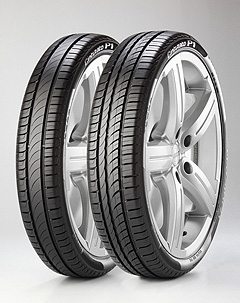Make / Model Search
News - General News - TechnologyFuture looks skinny for tyresTall order: Audi’s Urban Concept is a good example of which direction road tyre-maker Pirelli believes the industry’s future is taking. The rubber we ride on will look a lot different, says tyre-maker22 Mar 2013 By BARRY PARK THE next time you see a wild concept car wearing small, fat tyres that look a lot like the ones used today, have a snicker at the designer’s expense and move on. According to tyre-maker Pirelli, instead of the squat, wide tyres we know today, the future is tall and skinny. According to Pirelli Australia technical manager Simon Pool, tyre companies are soon to face big challenges from tightening European laws covering the amount of noise and rolling resistance tyres generate. The only way to work around the problem, he said, was to go tall and skinny. “The problem with tyres today is that they’re too wide, so they are terrible for noise and rolling resistance,” Mr Pool said. “The solution long-term is for tyres to get taller and skinnier,” he said. “By making them taller you can make the footprint (the amount of area in contact with the road surface) narrow and long to keep it the same as the tyres today.” Mr Pool said a typical tyre is expected to grow to about 21 inches in diameter by 2020 — compared with a standard size of about 16 inches today — with a narrow tread and a deep sidewall. Pushing the need to rethink what future cars roll on all comes down to European laws that make it tougher to rate tyres on how much noise, wet weather grip and rolling resistance they should offer.  Left: Pirelli Cinturato P1 Special E Edition Left: Pirelli Cinturato P1 Special E EditionThe rules governing how tyres are rated were introduced to Europe last year, and change again in 2016 and 2020. Mr Pool said this was to account for new tyre technology that is likely to result in less noise, lower rolling resistances and improved wet braking performance. “There are gradings now for ultra-low rolling resistance tyres, and there are a couple of tyres on the market that we call `AA’, as in they get an ‘A’ for rolling resistance and an ‘A’ for wet-braking performance,” Mr Pool said. “But the changes in these laws mean it will become a lot harder to get an ‘AA’ rating unless we do something different. “It’s going to get much harder to achieve these numbers.” Mr Pool says one design that reflects the changes needed for tyres of the future is Audi’s Urban Concept, a lightweight two-seater featuring wheels that look more at home on a motorcycle than a car. “It’s like we’re going back to the old days, turning the clock back 100 years,” he said. Tyre makers are talking with the federal government over introducing similar tyre ratings to Australia, hopefully as early as 2015. The European system requires tyre makers to include a sticker on the products they sell, giving an easy-to-understand score for how much noise they generate, how well they save fuel while rolling, and how well they brake in the wet. However, while the European system is compulsory, the one proposed for Australia is voluntary, meaning it is up to tyre makers to decide if they will include the stickers.  Read more18th of March 2013  Run-flats ‘not for cheap cars’Pirelli pours cold water on puncture-proof tyres at non-premium end of the market29th of October 2012  Call to fit Commodore with run-flatsTyre-maker challenges Holden to rethink its stance on traditional spare wheels |
Click to shareGeneral News articlesResearch General News Motor industry news |












Facebook Twitter Instagram